War has been fought for many reasons throughout history.
Blood has been spilled, kingdoms destroyed, and people slaughtered.
Some battles played a significant role in history, some created legends which have been passed down through the generations, and some of the efficient military tactics that originated on the ancient battlefields are still followed today.
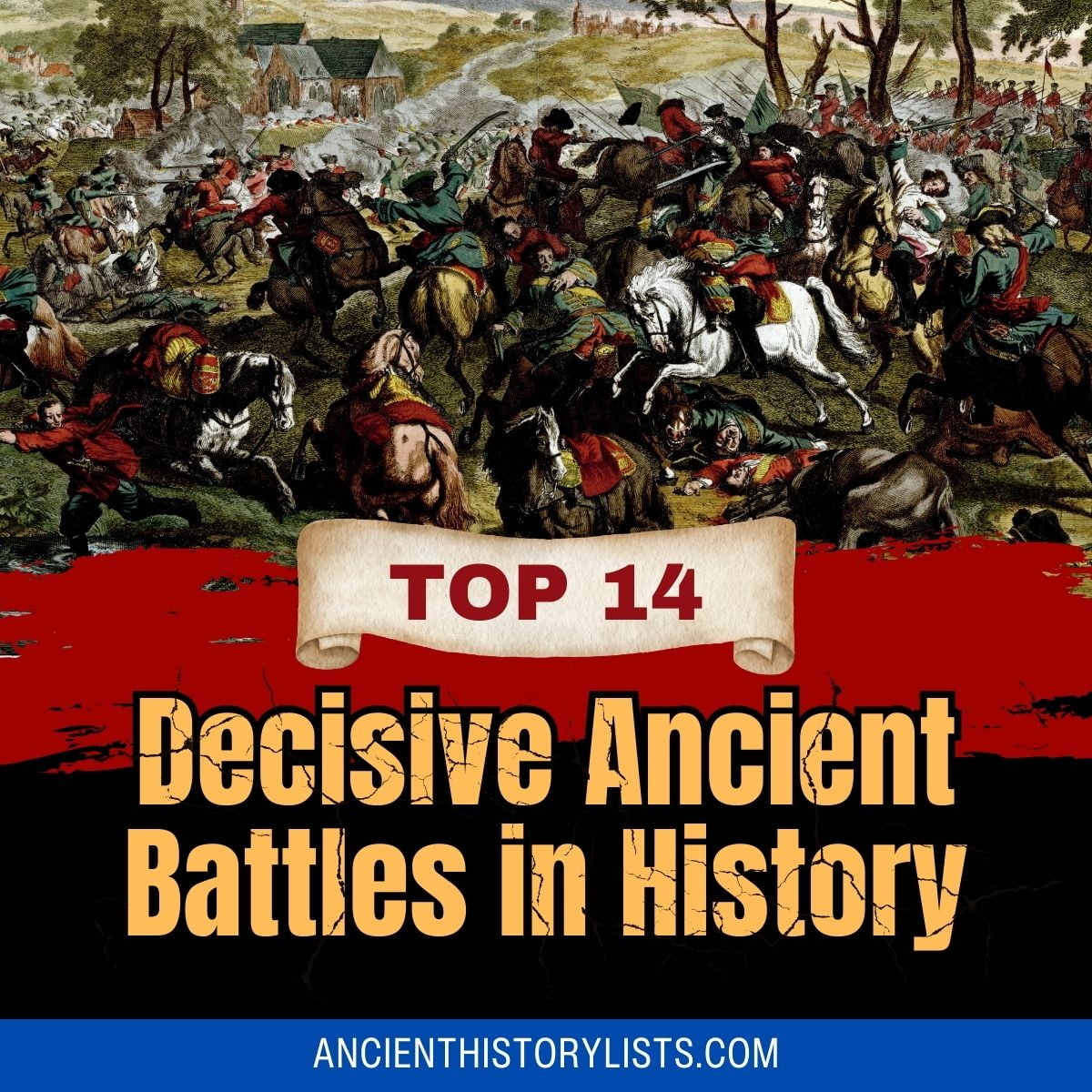
Ancient military commanders like Alexander the Great and Hannibal proved with their brilliant strategies that nothing was impossible on the battlefield.
14. Battle of Plataea (479 BC)
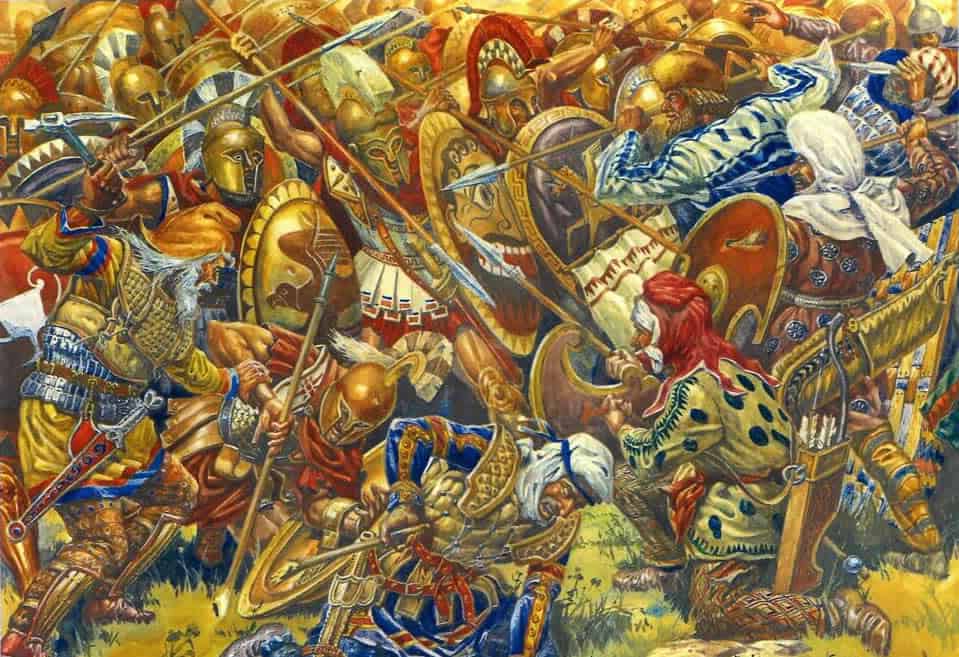
Battle Between: Persians and Greeks
Greek Leaders: General Pausanias and Aristides
Persian Leader: Mardonius
Date: August 479 BC
Victory: Greece
Location: Plataea, Greece
Greek Army: 40,000 men
Persian Army: 70,000–120,000 men
In the summer of 479 BC, a large Persian force led by King Xerxes invaded Greece. The Greeks tried to hold the Persian force with 300 Spartiates and 7,000 hoplites under the leadership of King Leonidas in a narrow pass. Despite the gallant efforts of the Spartans, Persia conquered Thermopylae and had several victories in Artemisium, Thessaly, Boeotia, Euboea, and Attica. However, the Persians lost the Battle of Salamis. Then Xerxes retreated and returned to Asia with half of his army. He put Mardonius in charge in Boeotia.
The 60,000 hoplites, under the command of the Spartan king, Pausanius, marched towards Boeotia to fight the Persians. The historic battle took place near Plataea (modern Plataiai) in Boeotia. A huge portion of the Persian army was trapped in the camp and slaughtered. This battle allegedly happened on the same day as the Battle of Mycale and marked the end of the Persian invasion.
13. Battle of Thermopylae (480 BC)
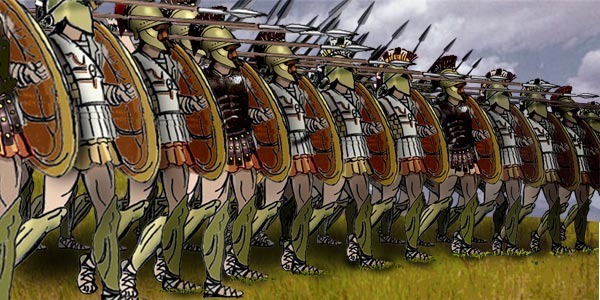
Battle Between: Persians and Greeks
Greek Leaders: King Leonidas I, Demophilus
Persian Leaders: King Xerxes I of Persia, Mardonius, Hydarnes
Date: 480 BC
Victory: Persian
Location: Thermopylae, Greece
In the summer of 480 BC, an unparalleled Greek force of 7,000 men, led by King Leonidas of Sparta, blocked the outnumbered Persian army at the pass. The Greeks held off the Persians for seven days in three vicious battles, often epitomized as famous last-stand battles in history.
Leonidas blocked the road with his troops for two days, this road being the one and only way for the Persian army to pass. After the continuous two-day battle, Greek resident Ephiatles revealed a secret pass through which the Persian army could enter. Leonidas, with his 300 Spartans and several other Thespians and Thebans died a glorious death at the pass.
12. Battle of Red Cliffs (208 AD)
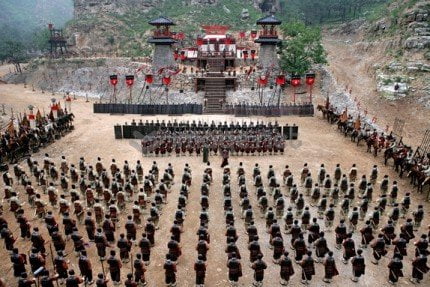
Battle Between: Southern warlords Liu Bei and Sun Quan and Northern warlord Cao Cao
Southern Leaders: Zhou Yu, Cheng Pu, Liu Bei
Northern Leader: Cao Cao
Date: 208 AD
Victory: Sun Quan and Liu Bei
Location: Yangtze River, China
Southern Warlord Army: 50,000
Northern Warlord Army: 800,000
The Han dynasty ruled China for around four centuries, dividing the kingdom into its Western and Eastern periods. A decisive battle took place in 208 AD between the two southern warlords, Liu Bei and Sun Quan, and Cao Cao who had control over the northern part of China. Cao Cao assembled his 800,000 soldiers and attacked his southern rivals swiftly with a mission to unify China.
The southern warlords had 50,000 soldiers altogether, including 30,000 trained naval soldiers led by Zhou. Despite the low numbers of soldiers, Zhou Yu and Lu Su were able to capitalize on the disadvantages of Cao’s army. The biggest disadvantage Cao Cao faced was the lack of stable rear supplies, and the fact that many of the soldiers were inexperienced in naval warfare.
See also:
Top 10 Ancient Chinese Inventions and Discoveries
11. Battle of the Hydaspes (326 BC)
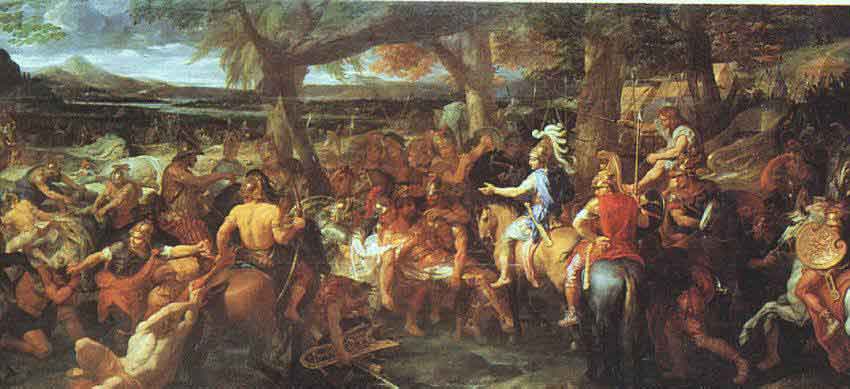
Battle Between: Macedonians and Hindu Paurava kingdom (Punjab near Bhera)
Greek Leaders: Alexander the Great, Craterus, Coenus, Hephaestion, Ptolemy, Perdiccas, Seleucus, Lysimachus, Demonicus of Pella, Peucestas
Hindu Paurava Leader: King Porus
Date: May 326 BC
Victory: Macedonian
Location: Punjab, ancient India, near the Hydaspes River
Often considered one of the costliest battles for Alexander the Great, the Battle of the Hydaspes River was fought between King Porus of the Hindu Paurava kingdom and Alexander the Great in 326 BC. During this battle, Alexander attempted to cross the river during a monsoon despite the great Indian force waiting for him on the opposite side.
The battle was the result of Alexander’s mission to extend his empire towards India. The battle opened a gateway to develop Greek and Indian cultures that lasted many centuries.
10. Battle of Changping (262 BC–260 BC)
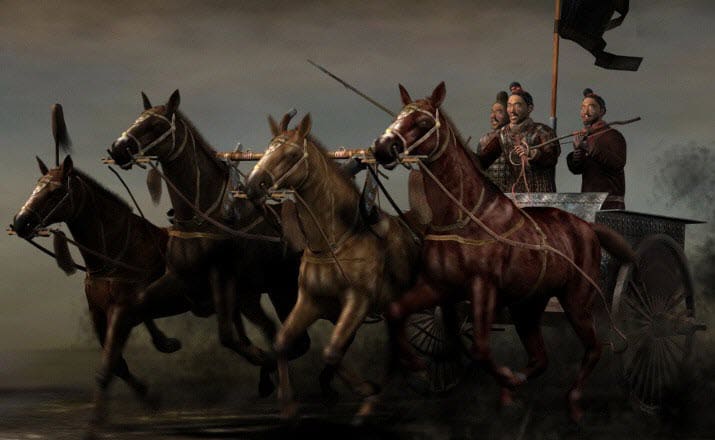
Battle Between: State of Qin and State of Zhao
State of Zhao Leaders: Lian Po, Zhao Kuo
State of Qin Leaders: Wang He, Bai Qi
Date: April 262 BC–July 260 BC
Victory: State of Qin
Location: Northwest of Gaoping, Shanxi
State of Zhao Army: 450,000
State of Qin Army: 550,000
The Battle of Changping took place during the Warring States period in China between the state of Qin and state of Zhao. The Qin attempted to invade the Zhao in 262 BC but was forced back. The Zhao, with a 400,000-strong force, attacked the Qin camp. However, the Qin’s army ambushed the Zhao force in the mountains before they could reach the camp.
After 46 days without supplies the Zhao finally surrendered and the Qin won a decisive victory.
9. Battle of Chalons (451 AD)
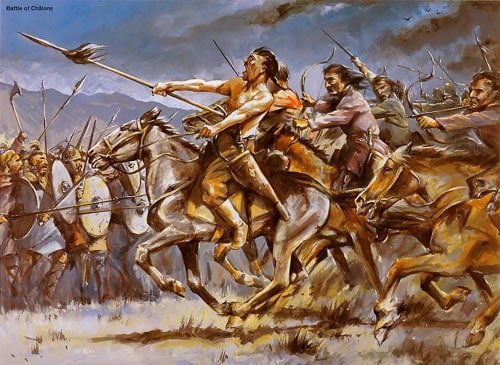
Battle Between: Roman Empire and Gallic Empire
Roman Leader: Aurelian
Gallic Leader: Tetricus I
Date: June 20, 451 AD
Victory: Roman
Location: Châlons-en-Champagne, France)
The Battle of Chalons was part of the Hunnic invasions of Gaul, fought between Roman Emperor Aurelian and Emperor Tetricus I of the Gallic Empire. This battle has been remembered for years because of the high death toll. It ended the Gallic Empire and reunified it with the Roman Empire after 13 years of separation.
8. Battle of Kadesh (1274 BC)
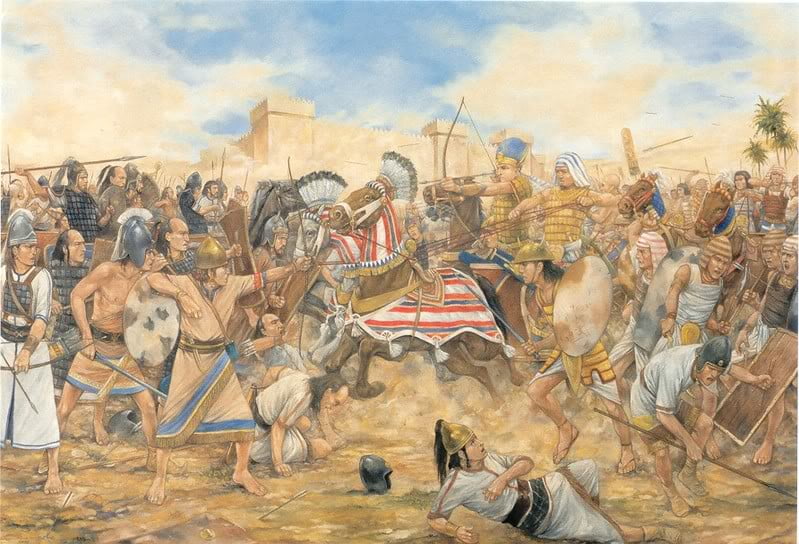
Battle Between: New Kingdom of Egypt and the Hittite Empire
Egyptian Leader: Ramesses II
Hittite Empire Leader: Muwatalli II
Date: May 1274 BC
Victory: Egyptian
Location: Orontes River near Kadesh
Hittite Army: 20,000
Egyptian Army: 23,000–50,000
The Battle of Kadesh is the oldest ever recorded military battle in history in which the details of formations and tactics are known. The battle took place in present-day Syria between the Egyptians (Ramesses II) and the Hittite Empire (Muwatalli II).
Ramesses, along with his bodyguard, arrived from the north to join the Amun division and set up a fortified camp to await the Ra division who were marching from the north. They captured two Hittite spies who, after being tortured, revealed the true location of Muwatalli’s army.
After learning the location, Ramesses summoned the remainder of the army and planned to attack the Ra division. When Muwatalli saw an approaching army, he sent his chariot force south of Kadesh to attack the approaching Ra division.
7. The Siege of Syracuse (214 BC–212 BC)
Battle Between: Roman Republic and Syracuse, Carthage
Roman Leaders: Marcus Claudius, Marcellus
Carthaginian Leader: Epicydes
Date: 214 BC–212 BC
Victory: Rome
Location: Syracuse
Roman Army: 18,000 infantry, 2,000 cavalry
Carthaginian Army: 21,000
The Siege of Syracuse is part of the Second Punic War that took place between 214 and 212 BC. Sicily was fragmentally divided between two rulers. The Romans controlled the west and north, while Hiero controlled the remainder. After the death of Hiero, his young grandson Hieronymus succeeded him.
He started negotiating with Hannibal but this did not turn out well for him. Hieronymus was assassinated and Syracuse was declared a democratic republic primarily dominated by the Carthaginians.
The assassination of Hieronymus led to a conflict between pro-Carthaginian and pro-Roman factions. The two brothers, Hippocrates and Epicydes, of mixed Syracusan and Carthaginian descent, took control of the city in the hope of creating a Sicily–Carthaginian stronghold.
In order to deal with the situation, the Romans sent Marcus Claudius Marcellus to Sicily, who took control of Leontini and took all the Carthaginians prisoner, beating and beheaded them. The two brothers escaped from Leontini and spread the story to the Romans.
The Romans slaughtered all the inhabitants of the city and Marcellus encircled Syracuse and commenced the military operation in 213 BC.
6. Battle of the Metaurus (207 BC)
Battle Between: Carthage and Roman Republic
Carthage’s Leader: Hasdrubal Barca
Roman Republic’s Leaders: Marcus Livius Salinator, Gaius Claudius Nero, Porcius Licinus
Date: 207 BC
Victory: Rome
Location: Metaurus River, Marche, present-day Italy
Roman Army: 7,000 soldiers (8 Roman legions plus Nero’s reinforcements of 7,000)
Carthage Army: 30,000 soldiers (25,000 infantry, 5,000 cavalry, and 15 war elephants)
The Battle of Metaurus was one of the most important battles of the Second Punic War. Hannibal was waiting for reinforcements and seized equipment from his brother Hasdrubal.
The reinforcements and equipment were pivotal to secure a victorious battle against Rome. The Roman force was led by Marcus Livius Salinator and Caius Claudius Nero. Claudius, who was fighting Hannibal in Grumentum, 100 km south of the Metaurus river, reached Metaurus to accompany Marcus Livius.
The vicious and undetected forces trapped Hasdrubal in Metaurus. Instead of the expected military troops, Hannibal received Hasdrubal’s head thrown by the Romans into his camp.
5. Third Servile War (73 BC–71 BC)
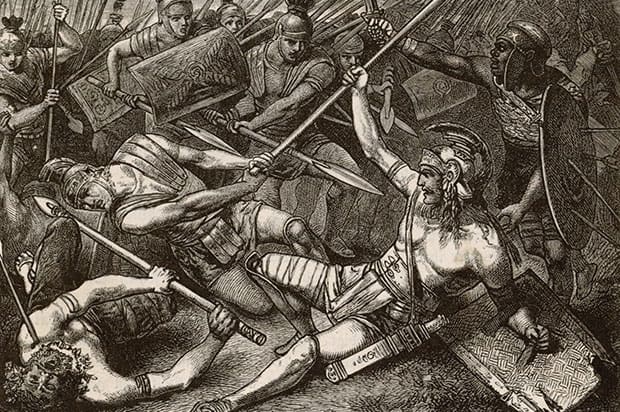
Battle Between: Roman Republic and an army of escaped slaves
Slave Leaders: Spartacus, Crixus, Oenomaus, Castus, Gannicus
Roman Leaders: Gaius Claudius Glaber, Publius Varinius, Lucius Furius, Lucius Cossinius, Gnaeus Cornelius, Lentulus Clodianus, Lucius, Gellius Publicola, Gaius Cassius Longinus, Gnaeus Manlius, Marcus Licinius Crassus
Date: 73–71 BC
Victory: Rome
Location: Roman Republic (Modern day Italy)
Slave Army: 120,000 escaped slaves and gladiators, total number unknown
Roman Army: 8 Roman legions of 4,000–6,000 infantrymen plus auxiliaries, 32,000–48,000 infantry plus auxiliaries, 12,000 garrison troops
The Third Servile War was the last in a series of slave rebellions against the Roman Republic led by the rebellious Roman slave Spartacus. The small group of 78 slaves and escaped gladiators grew into a massive army made up of 120,000 men, women, and children.
With the growing threat from the slave rebellions, the Romans formed an army of eight legions under the leadership of Marcus Licinius Crassus. The war ended in 71 BC with a decisive Roman victory.
4. Battle of Gaugamela (331 BC)
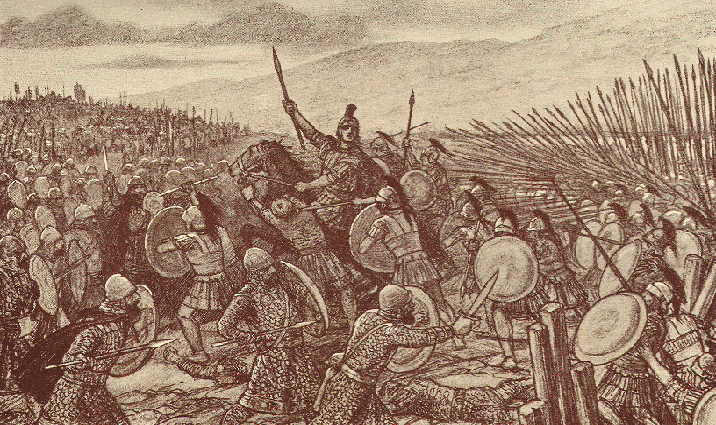
Battle Between: Hellenic League and Achaemenid Empire
Hellenic Leaders: Alexander the Great, Hephaestion, Craterus, Parmenion, Ptolemy, Perdiccas, Antigonus, Cleitus, Nearchus, Seleucus, Ariston, Simmias of Macedon
Achaemenid Leaders: Darius III, Bessus, Mazaeus, Orontes II, Atropates
Date: October 1, 331 BC
Victory: Greek
Location: Tel Gomel near Mosul
Hellenic Army: 47,000
Achaemenid Army: 34,000–100,000
The decisive battle between Alexander the Great and the Persian Achaemenid Empire took place on October 1, 331 BC. Despite his small military force (compared to the Achaemenid Empire), Alexander’s tactics worked effectively. The two great armies met near Gaugamela (the present-day city of Mosul in Iraq). Alexander’s ingenious tactics worked so effectively that the battle led to the fall of the Achaemenid Empire.
3. Battle of Salamis (480 BC)
Battle Between: Roman Republic and Parthian Empire
Roman Leader: Greek city-states
Parthian Leader: Persian Empire
Date: September, 480 BC
Victory: Greek
Location: Straits of Salamis
The Battle of Salamis is part of the Greco-Persian wars fought between the alliance of Greek city-states and the Persian Empire in 480 BC. Despite being heavily outnumbered by Persian soldiers, the tactics of the Greeks allowed them to outmaneuver their enemy in the narrow streets.
A small Greek force blocked the Thermopylae pass. The Greeks engaged with the Persian force in the nearby Straits of Artemisium, resulting in the Battle of Thermopylae. The Greek forces were obliterated.
King Xerxes, realizing his forthcoming defeat, moved with his depleted army back to Persia and the Persian general, Mardonius, took charge of the battle. Often seen as the first ever-recorded naval battle, the Battle of Salamis ended up with a Greek victory. The Persians faced heavy losses, losing 300 ships as opposed to the Greeks’ loss of 40 ships.
2. Battle of Carrhae (53 BC)
Battle Between: Roman Republic and Parthian Empire
Roman Leaders: Marcus Licinius Crassus, Publius Licinius Crassus, Gaius Cassius Longinus
Parthian Leader: Surena
Date: May 6, 53 BC
Victory: Parthian
Location: Near Carrhae (Harran)
Roman Army: 34,000–44,000 legionaries (7 legions), 4,000 cavalry, 4,000 light infantry
Parthian Army: 9,000 horse archers, 1,000 cataphracts, 1,000 supply camels
Crassus, one of the wealthiest men in Rome, assembled his forces and decided to invade Parthia without the official consent of the Roman Senate. Crassus marched into Parthia through the deserts of Mesopotamia, rejecting an offer from King Artavasdes II of Armenia to use an Armenian route for the invasion.
The clash between the two empires took place near Carrhae. The Parthian leader Surena decisively won the battle, slaughtering and capturing most of the Roman soldiers. Crassus was killed in the battle, which led to the end of the Roman Republic and the rise of the Roman Empire.
1. Battle of Gaixia (202 BC)
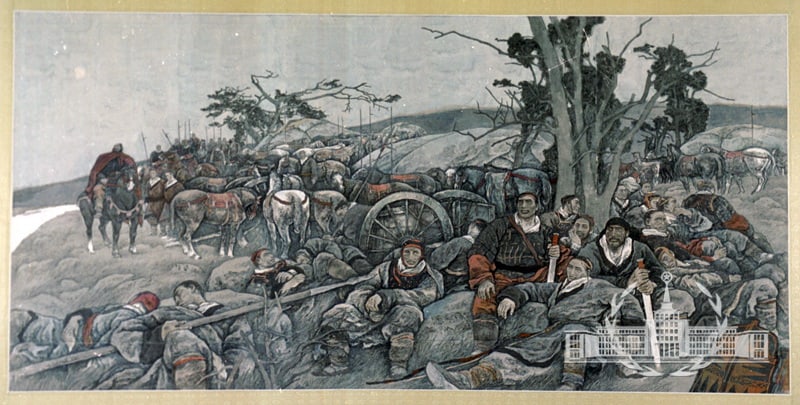
Battle Between: Han and Western Chu
Han Leader: Liu Bang
Western Chu leader: Xiang Yu
Date: 202 BC
Victory: Han
Location: Gaixia (present-day Suzhou, Anhui)
Han Army: 600,000–700,000
Western Chu Army: 100,000
The decisive battle of between the Chu and the Han, fought in 202 BC between Liu Bang and Xiang Yu, ended with a victory for Liu Bang. Liu Bang later proclaimed himself Emperor of China and founded the Han dynasty, whereas Xiang Yu committed suicide after the battle. During the battle, Han troops captured Xiang Yu’s wife “Consort Yu”. Yu sent most of his army to the capital to save his wife and the divided force turned out to be an advantage to the Han.
Liu Bang snared Xiang Yu’s 100,000 armies with his prodigious 300,000 force at night as the battle raged. When Xiang Yu saw his army crumbling, he had no choice but to fall on his sword.
Conclusion
All of these ancient battles created great political and geographical change. Huge numbers of people were killed, and yet the battles continued.
Some wars were the result of conflicts that could have been resolved in different ways. Often war was used to show a kingdom or country’s supremacy, and frequently led to the loss of innocent life.
Tha Battle of Salamis in 480 BC (#3) had nothing to do with the Roman Republic and Parthian Empire (neither yet existed) and the titles saying so must be an editing mistake because the description has it right: it was between the allied Greeks, predominantly Athens, since she had to only great Navy, and the Persian Empire.
Well said – also enjoyed that the Parthians could not maneuver very well in the streets, probably very hard to row, use the rudder on dry land – tough on the wood!
Why did u forget the great indian battle of mahabharata between kauravas and pandavas where 16000000 lives died?
These battles are historical. The Mahabarata is a made up religious text.
there were possibly less than 100,000,000 people roaming the world around then. 16,000,000 is an unfathomable amount, which would be crazy even in today’s date with 9 billion people.
My comments may be bad for western writers and historians but worse for Indian also because who are not interested to know his own glorious past. Because they (western) always ignored greatest than them… So, according to their policy Ramayana and Mahabharata are only epic, least we have seen their evidence… but still our mentality is sick and slave of English rule and education therefore we always deny them because now these things cant help us to earn our livelihood in present day. Well, I can wake them up who are sleeping but who whose are mocking only I can’t wake them up…
There is no disrespect intended and reference to Greek, Roman and Persian battles provide no reason to such an anti-English sentiment. The point is the that the number of deaths in legendary texts tend to be fanciful and mythological rather than historically accurate. They have a purpose of exalting a cultural collectivity and sense of values, not to be taken as science and history. The same goes for stories of men living inside whales for days or assembling all the living animal life on the planet onto a single craft constructed with the technology and material of that time.
What about one of the greatest battle of yarmouk between the Byzantine Empire and the Muslim Arab forces of Rashiudin Caliphate.
One of the most decisive battles in military history was The Battle of the Teutoburg Forest which took place in the Teutoburg Forest in 9 CE, when an alliance of Germanic tribes ambushed and decisively destroyed three Roman legions and their auxiliaries, led by Publius Quinctilius Varus. The anti-Roman alliance was led by Arminius, a Germanic officer of Varus’ auxilia who had acquired Roman citizenship and had received a Roman military education, thus enabling him to deceive the Roman commander methodically and anticipate the Roman army’s tactical responses.
This battle only lasted 2-3 days – it was THAT decisive. The three Roman Legions that were destroyed represented 1/10 of the entire Roman army and brought to a halt the expansion of Latin civilization into northern Europe, which changed the course of world history quite dramatically.
5000 years ago earth population was well below 100 million. So please consider numbers in Mahabarath wars again.
The article/blog is not very helpful. For one thing, the author doesn’t define what is a decisive battle. Are we talking about a battle that changes the course of history? In that case Zama is a decisive battle and Cannae is not. Kadesh is not a decisive battle in any understanding and certainly not strategically. Battle of the Metaurus is an important Roman victory in the Punic Wars but I don’t think it rises to being a decisive battle. Had the Romans lost the battle they would have likely hunkered down as they had in the past. The Servile War doesn’t even qualify as a battle so I don’t know what it is doing in the list. Carrahae changed nothing between Parthia and Rome. Even had Crassus been successful later victories by Trajan showed that holding Mesopotamia was beyond Rome’s strategic resources. Overall, not an impressive list.
The battle of chalons/tree battle of the catalaunian plains was not between “the gallic empire” and the Romans there was no such thing as the gallic empire at that time it was between the huns and an alliance of romans, visigoths and several other people
In the Battle of Kadesh you have listed the Egyptians as the victors. I have always read that the battle resulted in a stalemate and if a victor had to be declared it would be the Hittites. Just curious.
Why you did not mention BATTLE OF YARMOUK? The battle between Rashidun Army and Byzantine Empire
It is the most decisive battle in history